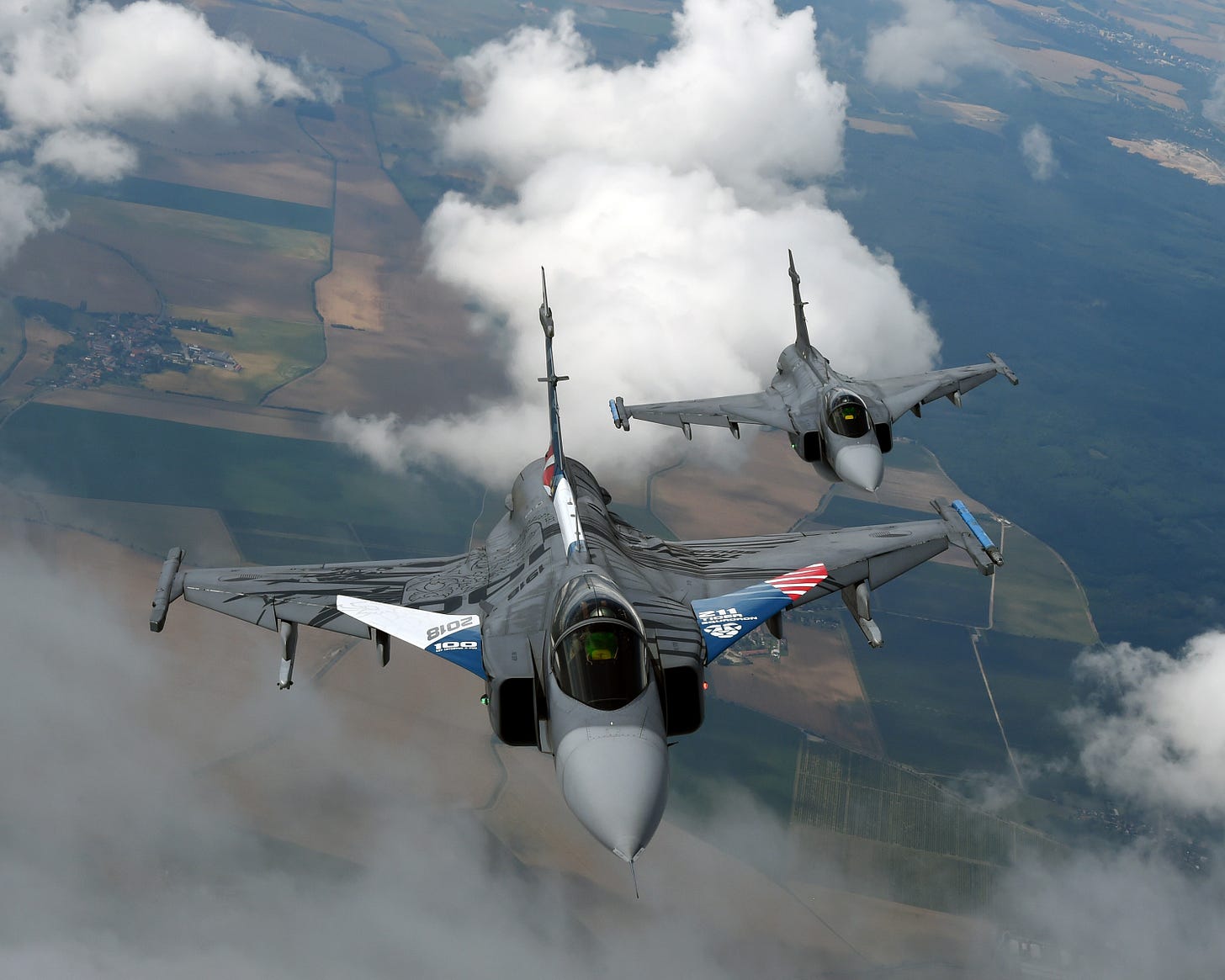Can Sky Shield Keep Ukraine’s Skies Safe?
Essentially a modern no fly zone with Europe's best fighters.

With Washington pulling the plug on military aid and intelligence sharing, a European-led initiative—dubbed Sky Shield—is gaining traction as a way to protect Ukrainian airspace from relentless Russian missile and drone attacks.
And the best part? It wouldn’t require NATO involvement, theoretically sidestepping the whole "World War III" scenario that the Kremlin loves to warn about.
The proposal calls for a force of 120 fighter jets to patrol the skies over Kyiv, western Ukraine, and three operational nuclear power plants.
The goal? Intercepting Russia’s long-range missile barrages and drone swarms before they slam into Ukrainian infrastructure and civilian targets. In a war where air superiority has been critical, this could be a game-changer—if Europe actually follows through.
What is Sky Shield, and Why Now?
Sky Shield isn’t some brand-new, out-of-the-blue concept.
European defense planners have toyed with the idea of establishing a protective air zone over Ukraine since Russia’s full-scale invasion in 2022. The initiative was originally proposed by the Chancellor of Germany Olaf Scholz in August 2022.
In October 2022, fifteen European states (Belgium, Bulgaria, the Czech Republic, Estonia, Finland, Germany, Hungary, Latvia, Lithuania, the Netherlands, Norway, Slovakia, Slovenia, Romania, and the United Kingdom) signed a declaration to join the German-led initiative.
But until now, the idea never gained serious momentum. Why? Because Washington was still footing the bill for Ukraine’s air defenses, and European governments weren’t eager to risk direct military entanglement with Russia.
But after Trump’s acrimonious meeting with Zelenskyy, the Biden-era era of unquestioned US support for Ukraine is over.
Military aid is frozen, intelligence sharing has been severed, and Kyiv is facing the stark reality that Europe will have to shoulder more of the burden. That’s why Sky Shield is suddenly back in the conversation—Europeans know that without stronger support, Ukraine’s air defenses will eventually buckle under Russia’s unrelenting missile attacks.
Unlike NATO’s broader defensive posture, Sky Shield is being positioned as a Europe-only initiative that sidesteps Washington’s internal politics.
The United Kingdom, France, Germany, Poland, and Sweden have already been discussing ways to enhance Ukraine’s air defense independently, and this proposal provides a concrete framework to do just that.



